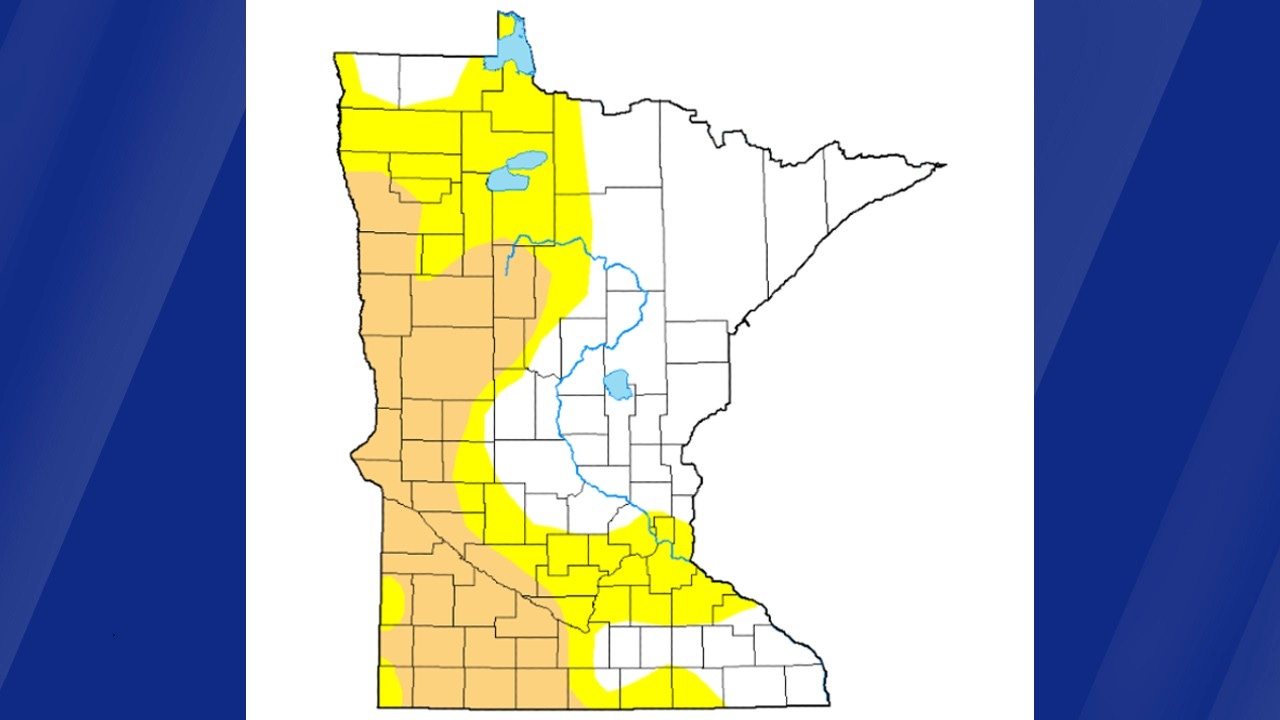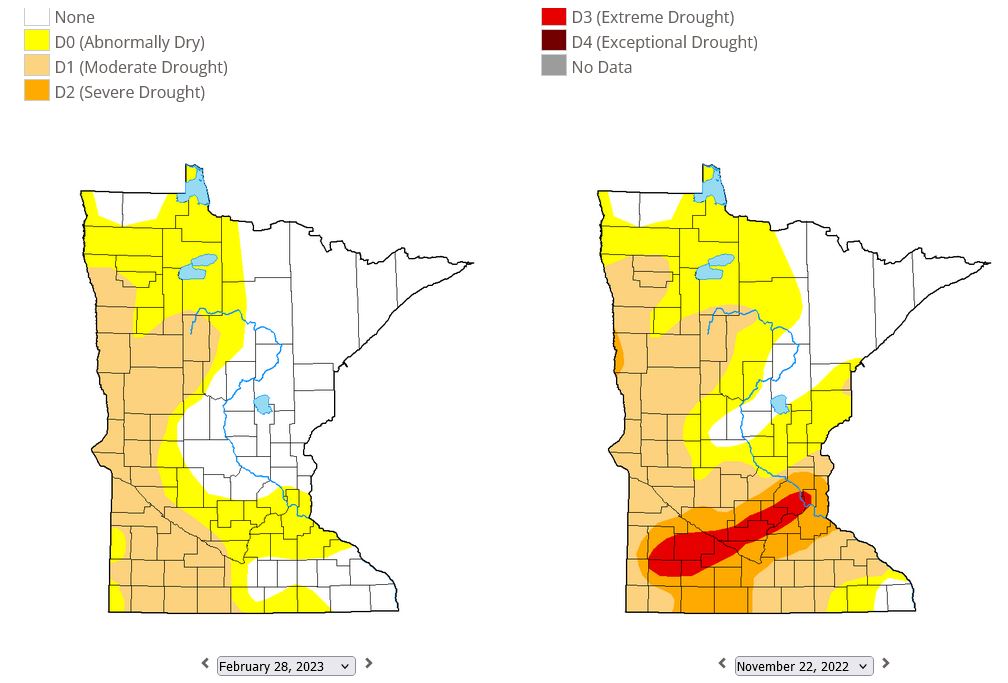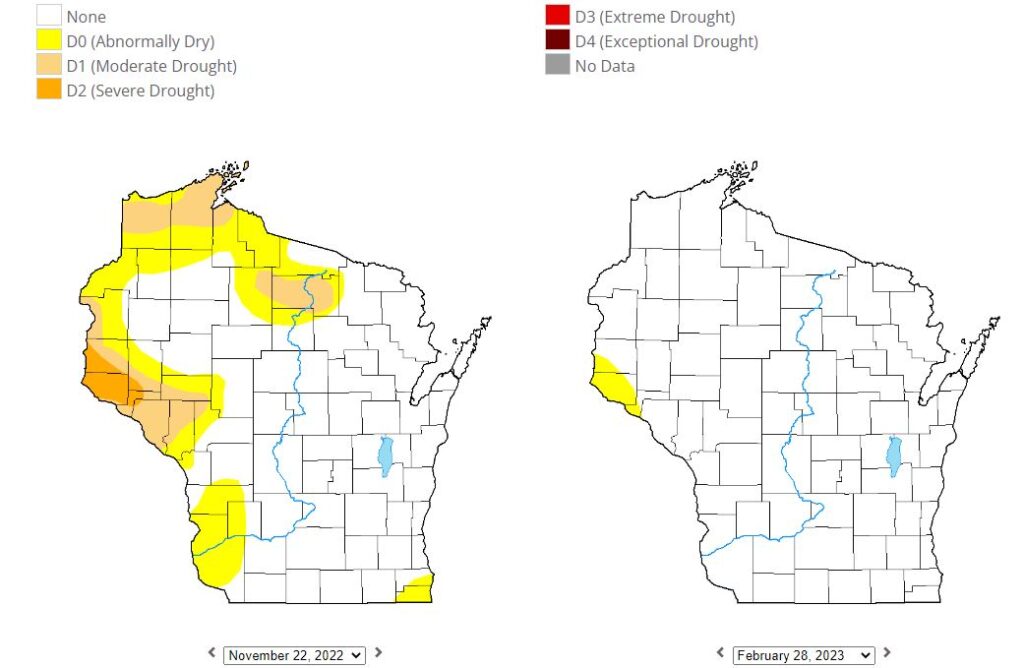Latest report shows Twin Cities in abnormally dry conditions, western Minnesota in moderate drought

The latest data from the U.S. Drought Monitor as of Feb. 28, 2023.
The United States Drought Monitor issued its latest drought report Thursday morning, and conditions have improved in much of Minnesota since November.
According to the report, while much of western Minnesota is currently listed as having a moderate drought, there are no areas experiencing severe or extreme drought conditions as was the case when the agency’s report was released on Thanksgiving Day.
At that time, parts of the Twin Cities metro area were experiencing severe drought conditions; Now, that same area is now listed as being abnormally dry.
In its latest report, the Drought Monitor says as of 7 a.m. Tuesday, 56.62% of the state has abnormally dry conditions, while 27.21% has moderate drought conditions. On Thanksgiving, 77.43% was considered abnormally dry, and 48.08% was classified as having a moderate drought. In addition, 15.9% was listed as having severe drought conditions, and nearly 5% had extreme drought conditions.

In Wisconsin, the latest report shows abnormally dry conditions in less than 1.5% of the state, while the rest of the state has no drought-like conditions. The area affected by the dry conditions includes nearly all of Pierce County, as well as western Pepin County and the southwest part of St. Croix County.
The report issued on Thanksgiving showed much of northwest Wisconsin experiencing conditions that ranged from abnormally dry to severe drought. A total of 31.63% of the state was listed as having conditions as abnormally dry or worse at that time.

Thursday morning, the Minnesota Department of Natural Resources announced the agency was looking for volunteers to monitor rainfall across the state.
The volunteers are needed for the Community Collaborative Rain, Hail and Snow Network (CoCoRaHS), which includes thousands of people across the country who use a standard rain gauge to measure rainfall in their yards. The information is then used by the National Weather Service, researchers, cities and others.
In order to become a volunteer, the DNR says you must have internet access in order to send in reports, provide or buy the standard four-inch rain gauge, and also complete online training for observing weather trends and submitting precipitation reports.
The agency stresses volunteers are needed outside of the Twin Cities metro area.
CLICK HERE to become a volunteer.